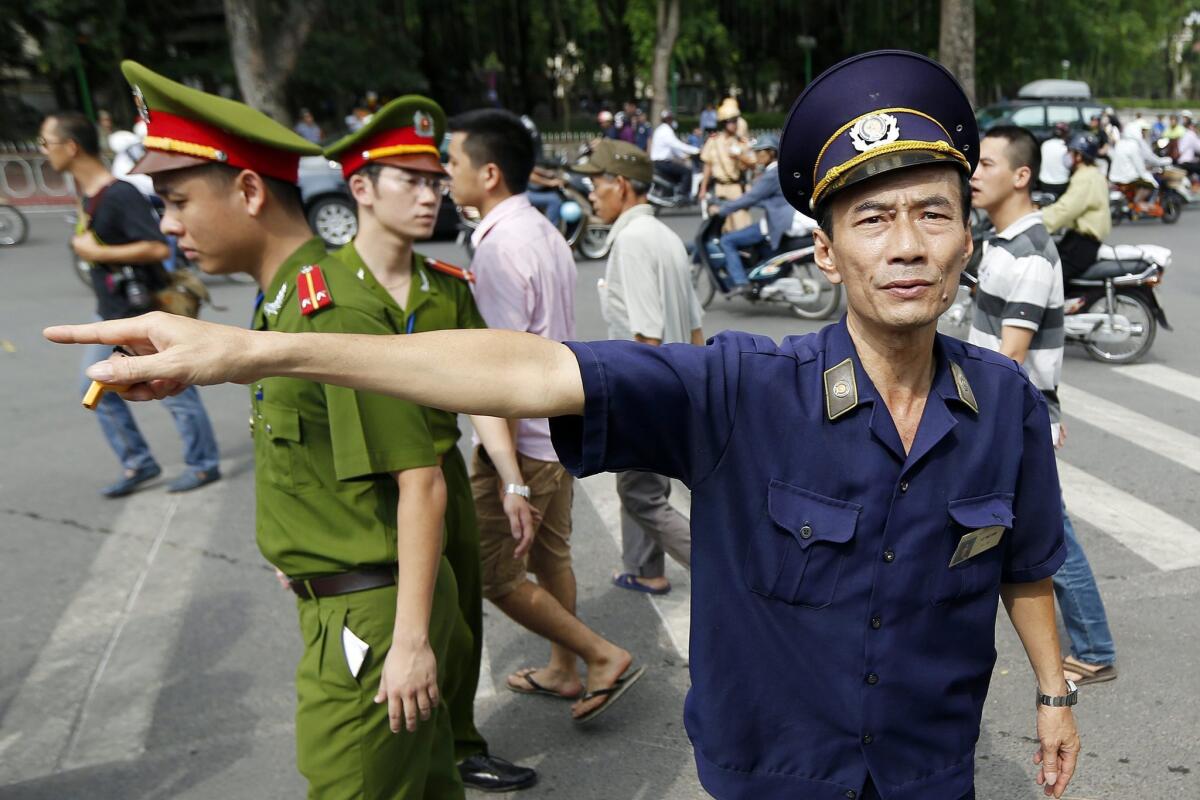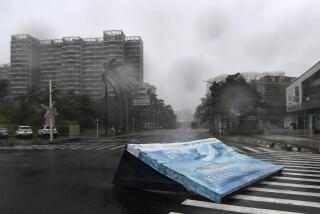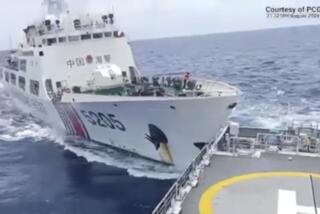RELATED STORY: Chinese vessel sinks Vietnamese fishing boat, raising tensions

- Share via
Reporting from Beijing — A Chinese ship rammed and sank a wooden Vietnamese fishing boat near a Chinese-operated oil drill in disputed South China Sea waters, Vietnamese state media said Tuesday.
Although there were no severe injuries reported, the incident was the most serious in a weeks-long standoff at sea in which Chinese and Vietnamese vessels have been circling each other, occasionally dueling with water cannons.
Vietnam said the incident happened at 4 p.m. Monday and that its vessel was a wooden boat operating in traditional fishing waters off the coast of Da Nang. Vietnamese state media claimed that the boat was encircled by 30 larger, steel Chinese vessels, one of which -- another fishing boat -- deliberately rammed it.
“I call this an act of attempted murder because the Chinese sank a Vietnamese fishing boat and then ran away,” Tran Van Linh, president of the Fisheries Assn. in the central port city of Da Nang, was quoted telling the Associated Press. “We vehemently protest this perverse, brutal and inhumane action by the Chinese side.’’
China fired back a competing version of events with its own state media, saying that the Vietnamese fishing boat was harassing a Chinese fishing boat.
“Chinese fishermen took resolute measures to prevent acts of sabotage and interference with Vietnam,” the official Xinhua news agency reported on its microblog account Tuesday.
Both sides said 10 people had been aboard the Vietnamese fishing boat and that they were rescued before the boat sank.
Vietnam has been protesting what it says are Chinese intrusions into its waters since early May when the $1-billion Chinese oil rig known as Haiyang Shiyou 891 was moved approximately 150 miles off of its coast. Vietnam says China’s drilling violates its right to resources within a 200-mile exclusive economic zone, while China claims to have jurisdiction over the nearby Paracel Islands, which it controls militarily.
Under President Xi Jinping, China has become more assertive about its maritime claims, sending fishing, maritime surveillance and oceanography vessels into disputed waters. Another encounter occurred over the weekend when Japanese and Chinese planes flew within about 100 feet of each other over uninhabited islands in the East China Sea.
Anti-Chinese sentiment has been swelling in Vietnam in recent weeks, culminating in recent riots in which at least four people were killed. More than 3,000 mainland Chinese, as well as Taiwanese, evacuated Vietnam because of the violence.
Since Vietnam’s reunification in 1975, relations between the former Communist allies have soured, with Vietnam now looking increasingly to the United States for protection. China and Vietnam fought a brief border war in 1979 and clashed again at sea in 1988.
Carlyle Thayer, a Vietnam expert at the Australian Defense Force Academy, described the current situation as the most dangerous since 1988, but said he believes that it will not escalate further because of economic interests.
“Vietnam is a market and a source of materials and a stepping stone into southeast Asia for China. Vietnam is also pushing for Chinese investment to make up for its trade deficit,” Thayer said. “I don’t see anybody wanting violence that will kill the goose that lays the golden egg.’’
More to Read
Sign up for Essential California
The most important California stories and recommendations in your inbox every morning.
You may occasionally receive promotional content from the Los Angeles Times.













